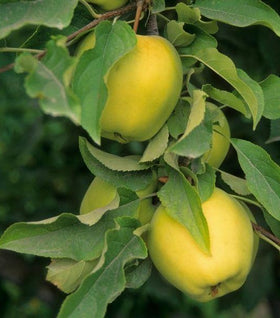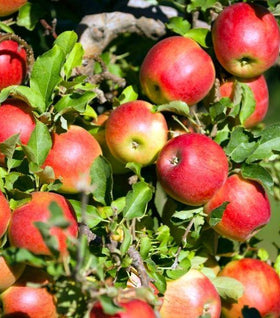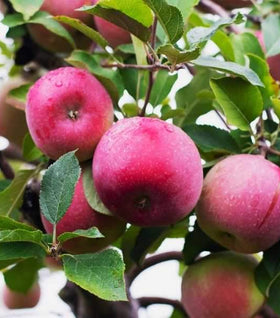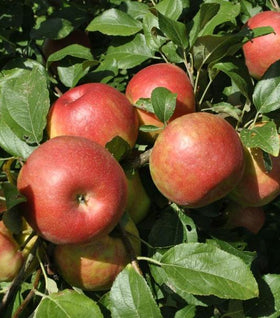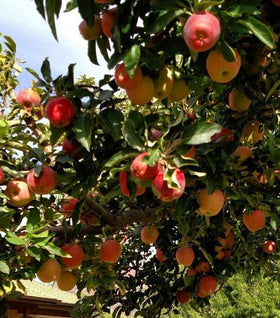Apple Trees
Few plants pay you back like a well-sited apple tree—spring bloom, summer shade, and crisp fruit in fall. Our lineup focuses on proven backyard performers such as Gala, Fuji, Granny Smith, Golden Delicious, McIntosh and warm-climate ally ‘Anna’, with Honeycrisp and Pink Lady often available seasonally. Every tree is nursery-grown and zone-ready, with straightforward guidance on siting, planting, and first-year care so you get a reliable harvest sooner.
Most apples fruit best with a compatible partner, so we make cross-pollination simple—pick two different varieties with overlapping bloom. From crisp fresh-eating to baking and cider, we’ll help you match flavor and harvest window to your kitchen and climate—then ship fast with our "We Grow Together" Promise so you can plant with confidence.
Build a small orchard or add a single specimen—this collection spans classic dessert apples (Gala, Fuji, Honeycrisp), tart keepers (Granny Smith), and heritage flavors (McIntosh, Winesap), along with Golden Delicious and Pink Lady for an extended season. We highlight semi-dwarf and dwarf forms that fit today’s yards, deliver earlier crops, and simplify pruning and picking.
You’ll find honest notes on mature size, light, and basic care, plus links to planting, watering, and pruning tips directly on the page—ideal if you’re new to fruit trees but want dependable results.
We've also written a blog to help you make the right choices when selecting apple trees for your region, as well as explaining what chill hours mean.
Growth Habits & Seasonal Interest of Apple Trees
Apples bring four-season appeal: pink-white spring blossom, lush green summer canopy, red/amber fruit in fall, and winter branch structure for classic orchard character. Semi-dwarf habits keep trees manageable (often 12–16 ft) with strong scaffolds and good light penetration, allowing for optimal color and flavor development.
Variety choice shapes your experience: early-bearing types deliver quick rewards, while late-season keepers store well; low-chill options, such as ‘Anna’, suit warmer zones. Pair two varieties with overlapping bloom to ensure heavy sets year after year.
Landscape Uses & Functional Benefits of Apple Trees
Line a driveway with matched semi-dwarfs for a mini allée, or anchor a kitchen garden with a single tree and underplant with pollinator perennials to boost bloom set. Apples provide light, dappled shade over beds, seasonal wildlife value, and, of course, homegrown fruit for snacking, pies, sauces, and cider.
For small spaces, choose dwarf or naturally compact cultivars and consider pairing them in twos for cross-pollination. In larger yards, stagger early-, mid-, and late-season varieties to extend the harvest from late summer into fall.
Maintenance & Durability Advantages
Success is simple: site in full sun (6–8+ hrs) with well-drained, fertile soil. Plant with the root flare at or just above grade in a hole ~2× as wide as the root ball; backfill with native soil, water deeply to settle, and mulch 2–3" (off the trunk). Keep the roots evenly moist during the first season; a slow-release starter fertilizer can help with early establishment.
Garden Goods Direct
Prune in late winter to establish strong scaffolds and promote light penetration; thin fruit after June drop to improve size and branch health. For regions with spring humidity, select disease-tolerant cultivars and use basic organic tools (e.g., copper- or fungicidal-based soaps) as needed.
Cornell University has published an excellent paper on the proper pruning of Apple Trees.
If you're planning to start planting your own orchard at home, Garden Goods Direct is your one-stop shop for fertilizers, insect and disease control products, and various types of fruit trees, including Pear Trees, Citrus Trees, Peach Trees, and many more!

